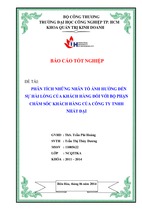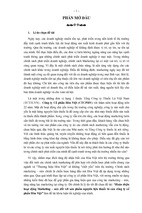Mô tả:
[13] to provide a more complete solution procedure. According to Mandal and Pal [11],
Wu and Ouyang [15], and Deng et al. [3], Wou [12] studied the inventory models from a
ramp type demand to any nonnegative function. He provided an explanation, from
managerial point of view, of deriving the optimal solution without constructing the
objective function, which dramatically simplifies the solution structure. Based on the
inventory model of Mandal and Pal [11], Wu and Ouyang [15] and Wu [14], Yang et al.
[19] developed an inventory model in which the demand is extended from a ramp type
demand to positive demand, showing that the optimal solution is independent of the
demand type. Owing to Mandal and Pal [11], Wu and Ouyang [15], Deng et al. [3], and
Skouri et al. [10], Hung [5] revised their models from special ramp type demand to
generalized nonnegative function, where the deteriorated rate is any nonnegative function
and the backlogged rate needs an extra condition to guarantee the existence of the
optimal solution. Lin [8] amended Deng et al. [3] and Cheng and Wang [1] to construct a
multi-period inventory model from a trapezoidal type demand to any positive function
with constant deterioration and complete backorder. The set up costs are included in the
inventory models of Cheng and Wang [1] and Lin [8]. Recently, Lin et al. [7] used
smoothly connected property to simplify the solution procedure of Wu et al. [16] and
then applied their approach to Deng et al. [3]. Hung [6] published a paper to compare the
interior local minimum and the boundary local minimum. Roy and Chaudhuri [9]
developed an EPLS model with a variable production rate and demand depending on
price. Wu et al. [17] applied the Newton method to locate the optimal replenishment
policy for EPQ model with present value. Yadav et al. [18] studied an inventory model
of deteriorating items with two warehouse and stock dependent demand.




















